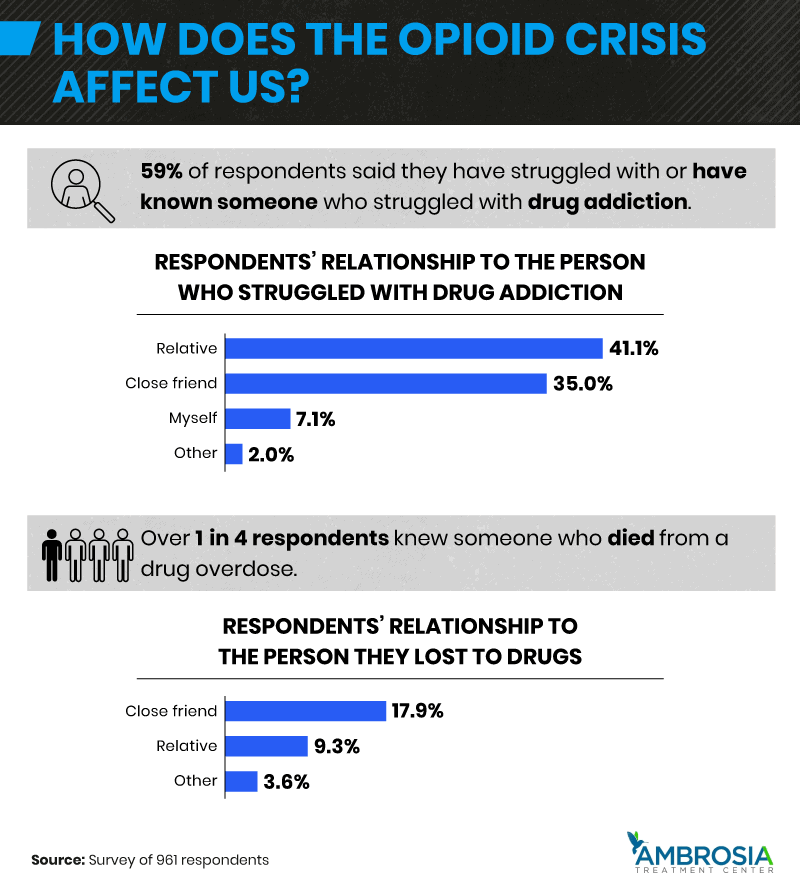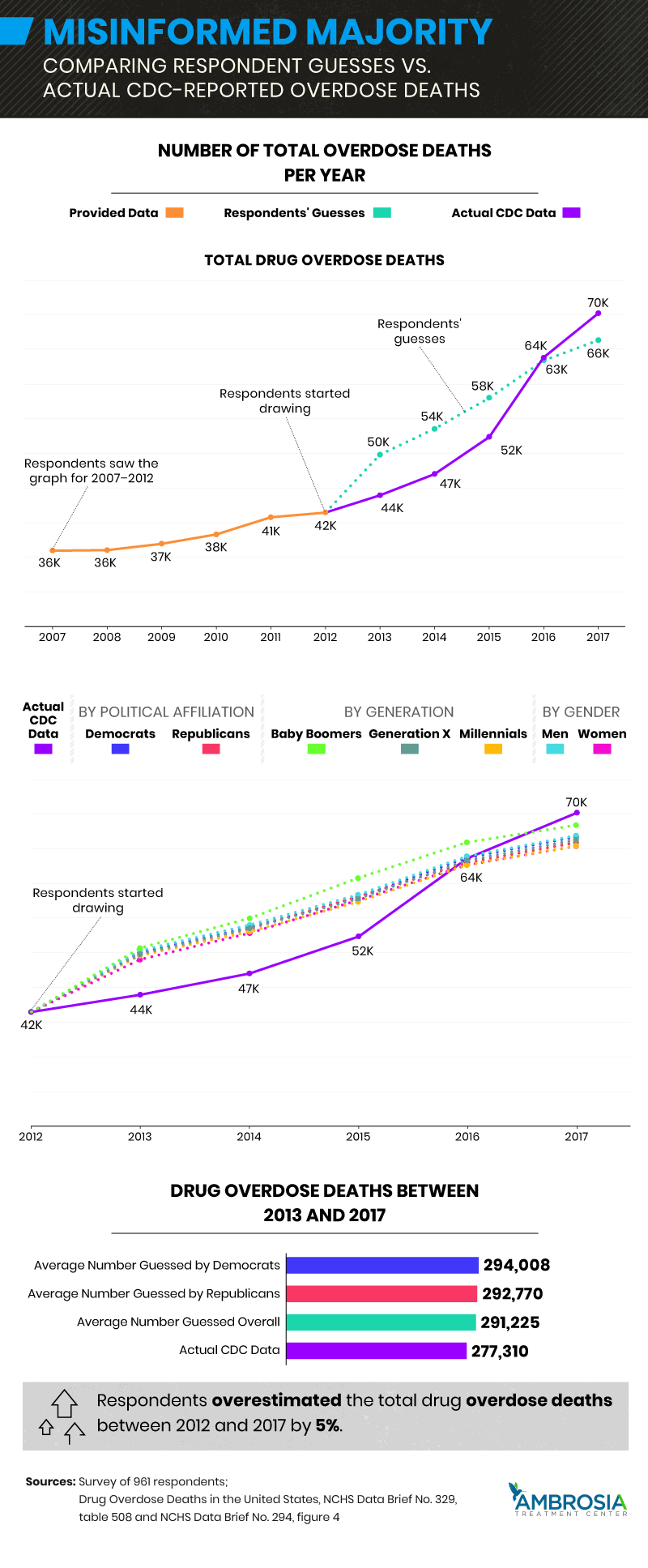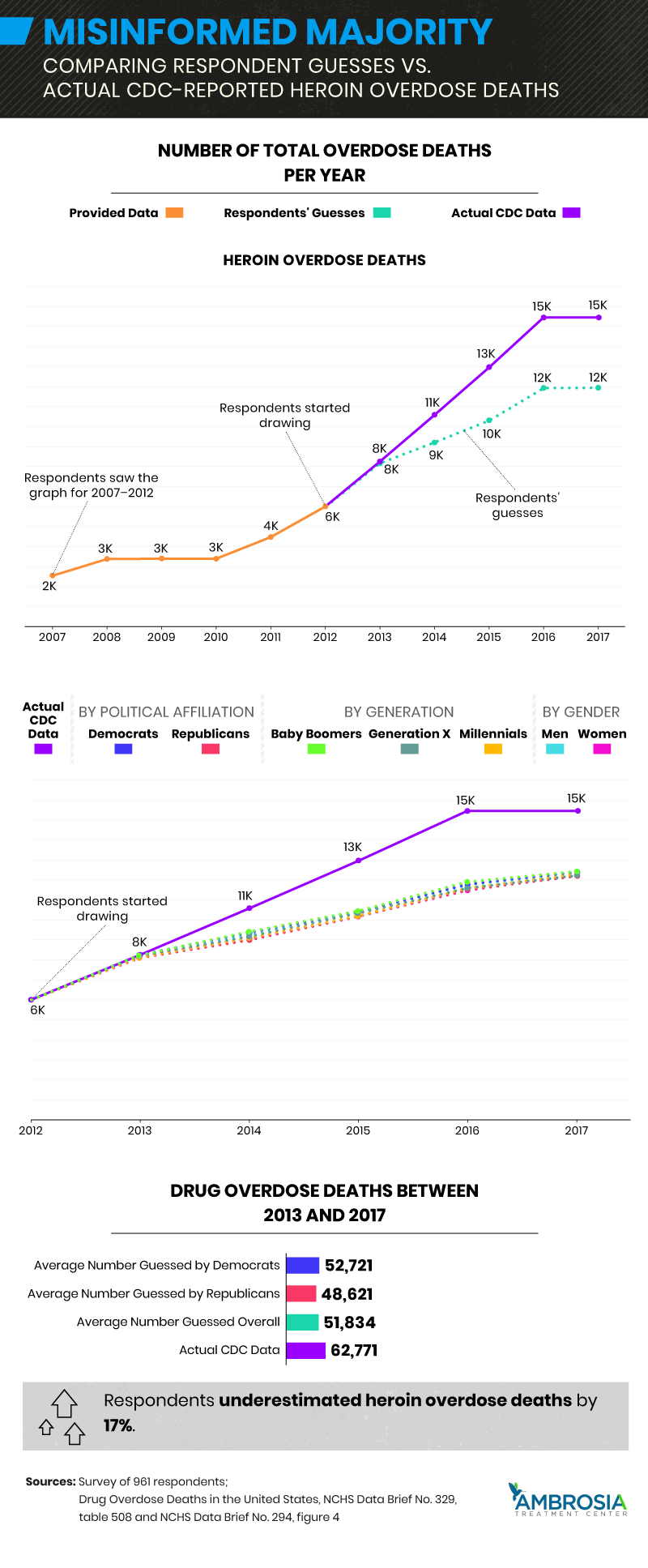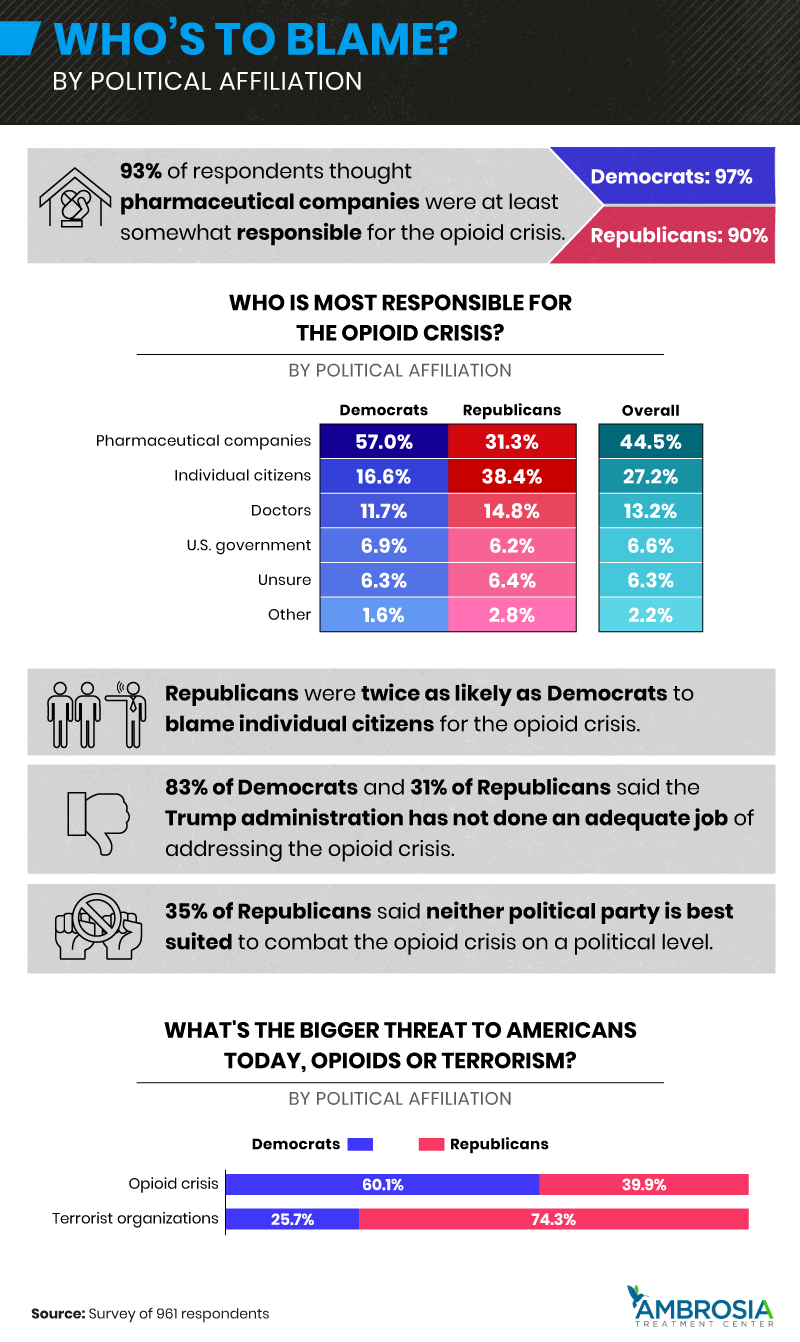
Despite the staggering numbers, the public has pointed fingers at Big Pharma, doctors, addicts, and even their opposing political party. But regardless of who is to blame, Americans don’t seem to understand the opioid crisis fully. To find out just how much public perceptions differ from reality, we surveyed over 900 Americans, asking them to take their best guess on overdose death trends from 2012 to 2017 and draw a graph to represent it. Keep reading to see just how far off their perceptions were.
Personally Affected by Addiction
Drug users may be at a significantly increased risk of overdose, but the shocking death statistics represent only one part of the problem. Around 31 million people suffer from substance use disorders around the world.

Considering the prevalence of deaths by overdose, nearly 1 in 3 respondents knew someone who died from a drug overdose. And while family members were more likely to be struggling with addiction, nearly 18% of people had a close friend they lost to drugs.
Different Perspectives
Close connections or even personal experience doesn’t necessarily mean people are clued into the bigger picture. When given the trend of overdoses between 2007 and 2012, Americans struggled to fill in the rest of the graph accurately.


Cause of Crisis
When it comes to tracing the root of the opioid crisis and pointing fingers at a cause, Big Pharma takes the brunt of it – for a good reason. Ninety-three percent of respondents thought pharmaceutical companies were at least somewhat responsible for the opioid crisis, and numerous lawsuits support their sentiment.

Despite only 6.9% and 6.2% of Democrats and Republicans blaming the government for the opioid crisis, respectively, 83% of Democrats and 31% of Republicans said the Trump administration had not done an adequate job of addressing the crisis. However, the SUPPORT for Patients and Communities Act of 2018, a bipartisan bill signed into law by President Trump, made it possible for physicians to use medication-assisted treatment (MAT) on up to 100 patients. And in spite of the skepticism of the Trump administration’s role in addressing the opioid crisis, MAT is a treatment program that 75% of Democrats and 62% of Republicans think is successful in combating the opioid crisis.
Regardless of the political moves already made toward combating the crisis, 74% of Democrats and nearly half of Republicans said they think the government should spend more money on the issue. The Trump administration seems to be paying at least some attention to the wishes of the public, though – the president’s 2018 budget invested more money in drug control policy than the year prior, with a total of $27.8 billion allocated toward drug control efforts. Nevertheless, the opioid crisis remains a major issue – one that 40% of Republicans and 60% of Democrats said they believe is a more significant threat to Americans than terrorist organizations.
Give It a Guess
Trending Toward Treatment
Americans may not be able to hit the nail on the head when estimating the number of overdose deaths over the years, but if there is one thing they can all agree on, it’s that the opioid crisis is plaguing the country and needs to be addressed. Whether it’s through lawsuits against Big Pharma or increased government spending on treatment programs, there are plenty of steps the United States can take toward ensuring 130 Americans don’t die every day. And on a smaller scale, there are steps individuals can take toward living a life free of the drugs putting them at risk of becoming part of these staggering statistics.
At Ambrosia Treatment Center, we are committed to providing those struggling with addiction and their mental health the help they need to get back on track. Our team of qualified medical physicians and clinical therapists work together to create personalized treatment plans to ensure a safe and lasting recovery. To learn more about how we can help you or a loved one, visit us online today.
Methodology and Limitations
For this project, we surveyed 961 respondents about the opioid crisis. To assess how respondents estimated the total number of drug overdoses in general and the total heroin overdoses from 2012 to 2017, we developed a web tool allowing respondents to complete a graph by drawing on the screen. We showed the graph from 2007 to 2012 and asked respondents to complete the graph reflecting their opinion of how the number of overdose deaths developed. We used the Centers for Disease Control and Prevention’s (CDC) overdose death totals by year throughout this project to compare respondents’ guesses against these numbers. After completing the drawing exercise, respondents answered a survey about the opioid crisis.
495 respondents were Democrats, and 466 were Republicans. Respondents ranged in age from 19 to 73 with an average age of 38.6 and a standard deviation of 11.8 years.
Our data rely on self-reporting by the respondents and are merely exploratory. Issues with self-reporting include, but aren’t limited to, exaggeration and bias. No statistical testing was performed. The data are not weighted.
Fair Use Statement
Do you want to share these findings on drug overdose deaths and the opioid crisis? The graphics and information found on this website are available for noncommercial reuse. Feel free to share them as much as you’d like across the web, on social media, and at the office, but please make sure to link back to this page. Thank you!



